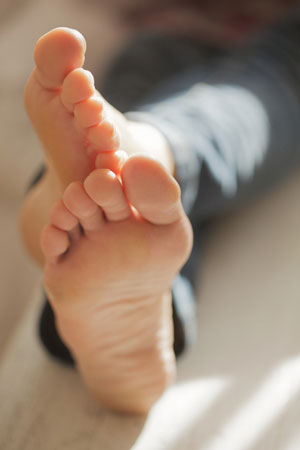 As your feet are the foundation of your body, you need to ensure that they function optimally. If you have a foot-related condition, an orthotic is beneficial. An orthotic is a custom-created insert for your footwear. They are designed to support the foot, improve function and reduce stress, strain and pain.
As your feet are the foundation of your body, you need to ensure that they function optimally. If you have a foot-related condition, an orthotic is beneficial. An orthotic is a custom-created insert for your footwear. They are designed to support the foot, improve function and reduce stress, strain and pain.
Fostering Improved Support and Better Movement
Orthotics work by supporting the foot in proper alignment. This alignment is known as a subtalar neutral position. They also control abnormal motion (most typically overpronation). Orthotics also reduce load or pressure on structures of the foot that typically result in callouses or corns.
Much like eyeglasses, foot orthotics are corrective when in use but don’t work to provide ongoing change when not in use. Orthotics are thought by some to correct skeletal alignment but Dr. Nigg a prominent University of Calgary researcher believes that it is much more likely that they affect muscle activity signaling the body to adapt the correct movement pattern.
When feet, knees and hips line up correctly new motor learning will occur encouraging the person to walk efficiently. Better movement will be beneficial in reducing stress to tissue decreasing pain and preventing overuse injury.
Conditions That Benefit From Orthotics
- Foot – Plantar fasciitis, bunions, heel spurs, Achilles tendonitis
- Shin splints
- Knee pain- patellar tendonitis, pes anserine bursitis
- Low back pain
What Does the Process Involve?
We first gather the following information to create your custom orthotic:
1. History - You will be asked if you have a specific pain or limitation in movement.
2. Observation - We’ll check your standing posture, callouses in the foot and wear pattern of your shoe.
3. Gait analysis - How you walk will be observed. We’ll check for foot flare, leg bowing, shoulder and hip height and rotation.
4. Force plate analysis - AFL clinic employs the GaitScan™ technology. It is a mat you walk on embedded with 4096 sensors which scan at 300Hz (frames per second) to measure the functional pattern of your gait. It determines the gait line of your foot, checking for supination or pronation and forefoot timing plus the force of each metatarsal contact.
5. Casting - Either a foam impression or a digital casting technology is used.
Types of Orthotic Design
Functional orthotics
This type of orthotics is designed to control the subtalar joint and foot biomechanics. Functional orthotics help in the management of pronation, plantar fasciitis and heel spurs.
Accommodative orthotics
These orthotics are less for control but designed to provide protection or relief to a specific part of the foot. These orthotics benefit patients with diabetic neuropathy and rigid feet. As the materials used in the construction of the orthotic increase in rigidity, they offer increased correction or motion control and less shock absorption.
These are specific design elements and wedges called modifications added to the orthotic device to provide accommodation for individual patient needs.
If you believe you could benefit from orthotics, contact Adjusted For Life Chiropractic Health Centre today to book an appointment!
